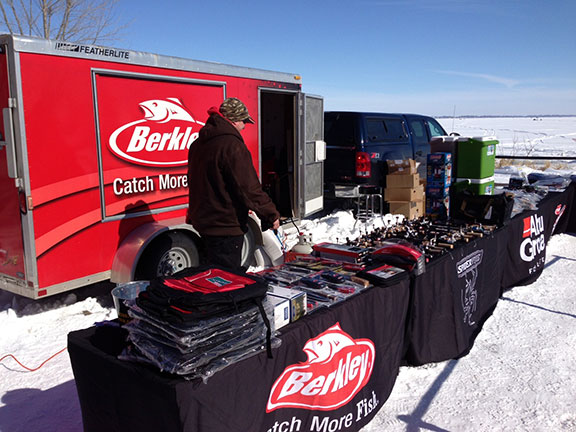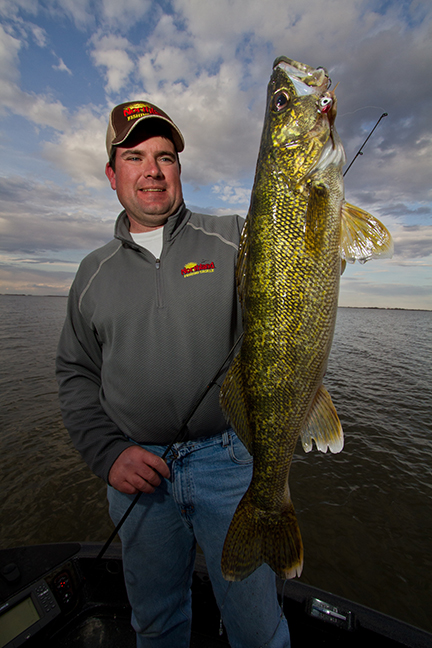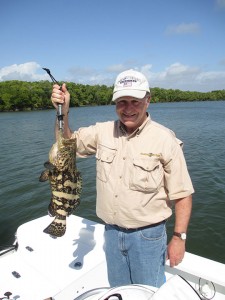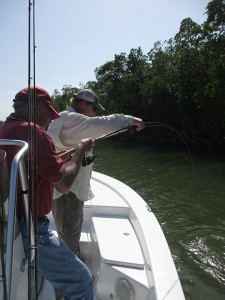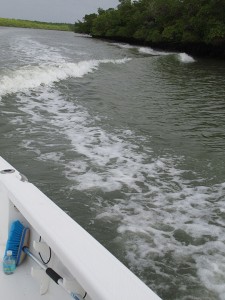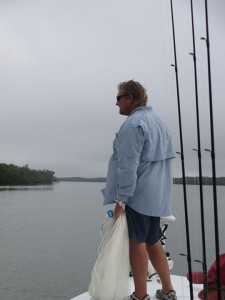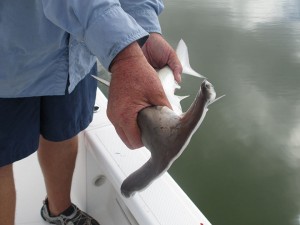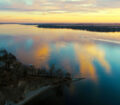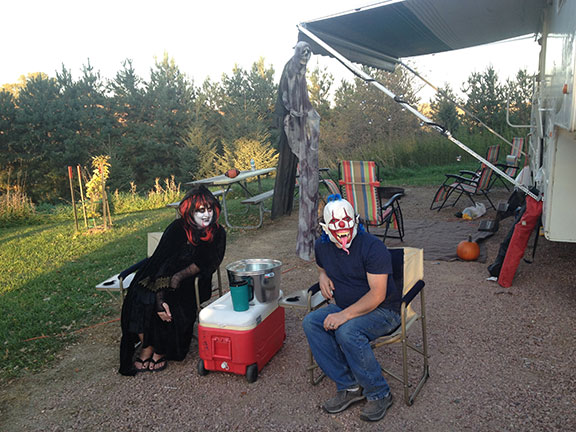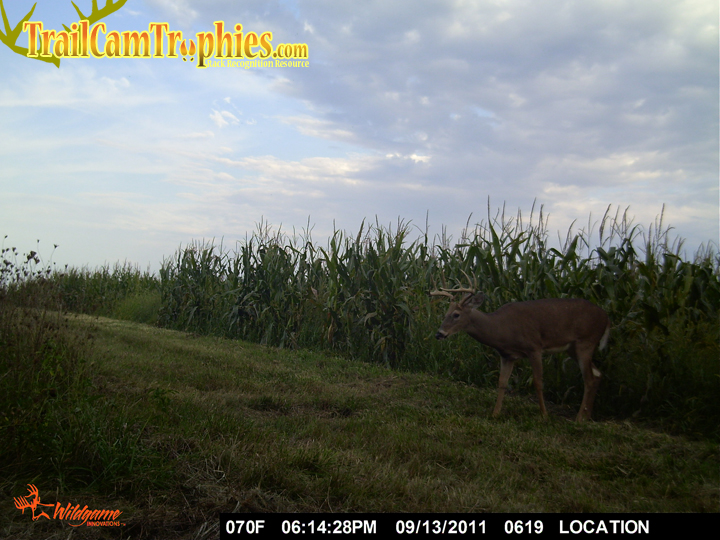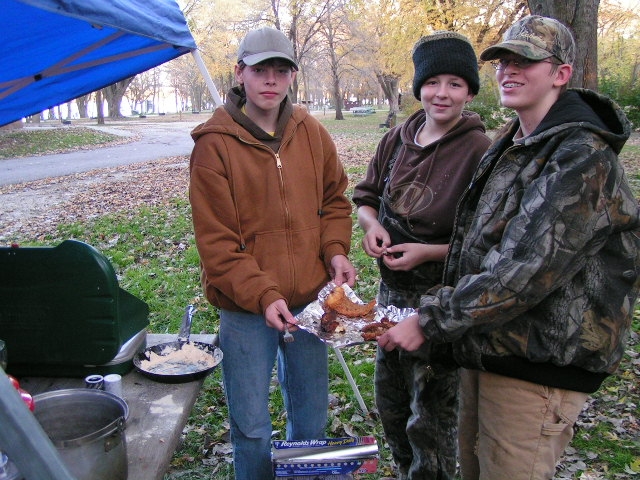By Steve Weisman
During our recent two-week trip to Florida, my wife and I enjoyed some sunny, warm weather that helped us forget about the cold and wind of northwest Iowa. During part of our trip, we spent three days with our son’s inlaws and our good friends Dick and Jan Pautvein. Iowa natives, who enjoy living on West Okoboji in the summer, Dick and Jan head to the Marco Island area when the winter weather hits!
Well, Dick and I knew the gals would want to shop (not on our bucket list), so I decided we should find a guide and check out the fishing. After a lot of searching, we chose Naples Back Country Fishing with Cap’t. Kevin Merritt (www.naplesfishingcharters.net) for two days of fishing. A well-known backcountry fly fishing instructor, US Coast Guard Master licensed captain and a noted national speaker, we found Merritt willing to share all he could about catching fish in the Back Country and sharing the remarkable ecology of the region. Each morning we met Merritt at the marina in Goodland just a 15 minute drive from Marco.
New Ball Game
For Iowans who fish the lakes of the Midwest, backcountry fishing is a whole new ball game. If you want a good place to get lost, fishing the Mangrove islands is just the place. After a short idle out of the marina area, Merritt opened up the throttle and cruised into a true maze of islands, winding in and around and out…Dick and I were lost already. Each bay, each shoreline-well, they kind of looked alike to us. To Merritt with his 16 years of guiding experience, not one was the same and each offered a different fishing opportunity. This was especially true since each day Merritt has to adjust to the rising and falling tide to both locate the fish and to also stay clear of suddenly appearing and disappearing bars!
To us, the only visible similarity was that each island was a stand of mangroves. These trees, which defy logic, are able to thrive in the salt water by taking oxygen from the surrounding air. Bunched together, their roots provide a woody base that becomes covered and then open to the air with the tide that rises and falls. These roots become a perfect protective lair for a wide range of fish. The trick is getting the bait under the canopy of mangrove branches to the fish stacked beneath the branches. It was our guide’s task to help two “newbies” learn the ways of the backcountry and how to present a bait that a fish would like!
Tackle
Our tackle included long rods and big spinning reels spooled with heavy braided line and a 2-3’ piece of monofilament leader to which Merritt tied either a jig head, hair jig or plain hook. To the plain jig head we threaded on a Gulp! plastic tail, to the hair jig a piece of fresh shrimp and to the plain hook a lively fresh shrimp. Those were the arsenal, each used at a different time and in a different way.
We threw the jig/plastic early in the morning as the tide slipped away. Merritt used his trolling motor to keep us out and away. Our goal was to flip it right to the base of the Mangrove roots, let it hit the bottom and then hop and bounce the jig back toward us. Merritt told us to set the hook hard when we felt the strike. “You gotta hit ‘em with hate!” In other words, my short hookset for walleyes had to be replaced by a cross-their-eyes hookset. This hard hookset also disorients the fish for just a second or two, enough time to reel fast and pump the rod. If you don’t the fish will bury the jig in the tangled mess of roots.
On my third cast, I could see why. Something popped the jig and sent a jolt right to the reel. My soft little hookset meant a five second fight and “See you later!” Merritt repeated, “You gotta hit ‘em with hate!”
I reeled up and tried again. A few casts later and I felt another pop. This time I set the hook and the fight was on. “Set it again,” said Merritt. In other words, don’t be a wimp! So, I did and a nice snook became airborne. It ended up being a 24-inch snook, but boy was it a freight train. Not quite in the keepable slot, we took a quick picture and let it go.
A while later, bam! This one ripped off several yards of line before I could really get a good hookset. Pump and reel, pump and reel. Gain some ground, and then the fish took off on another decisive run. Suddenly, limp line…whatever it was had straightened the hook. “Not enough hate,” I mumbled to myself. Our guess was a big red or snook!
So it was throughout the two days, a veteran of the backcountry trying to educate us on the go, so to speak.
Each day I would estimate we caught at least 30 fish, and we kept track of the number of species: 15 in all! No, most of them weren’t keepers or they were in the closed season or they were totally protected. Still, we were able to keep enough fish for a good evening meal at Snooks seaside restaurant the evening of the second day’s action. Our supper included redfish, speckled sea trout and silver trout.
The silver trout action was interesting. It was early afternoon and the tide was almost at its lowest, when Merritt stopped over a shallow flat-not relating to really any Mangrove island. How did he know to stop? He had a feeling. Well, 20 minutes later we had boated 12 silver trout. For a while, it seemed that every cast with a black hair jig and a piece of shrimp triggered a silver attack.
It was here that I caught the strangest backcountry inhabitant of our trip. We saw a shadow below the boat and there it was-a small hammerhead shark. Off it went toward the school of silver trout. A minute later I sent my jig toward the school, let it drop to the bottom and then began my jig/hop retrieve to the boat. Halfway in, bam, a vicious hit. I struck back with “hate” as Merritt said, and the fight was on.
Five minutes later, there it was thrashing at the boat: the hammerhead shark. Only 25 inches or so, it was still a trophy to me!
Even though temperatures were mild, in the low 70s in the morning, warming to the low 80s during the day, this was still the winter time and kind of the off season. Nothing like being here in the spring and early summer and then the fall noted Merritt. Yes, there are bigger and more fish to be caught, but then that’s when I love fishing and hunting in northwest Iowa.
So, at this point, I had to decline the offer. However, it was definitely worth the trip, and I know I’ll contact Captain Merritt, when we do head back another time.

